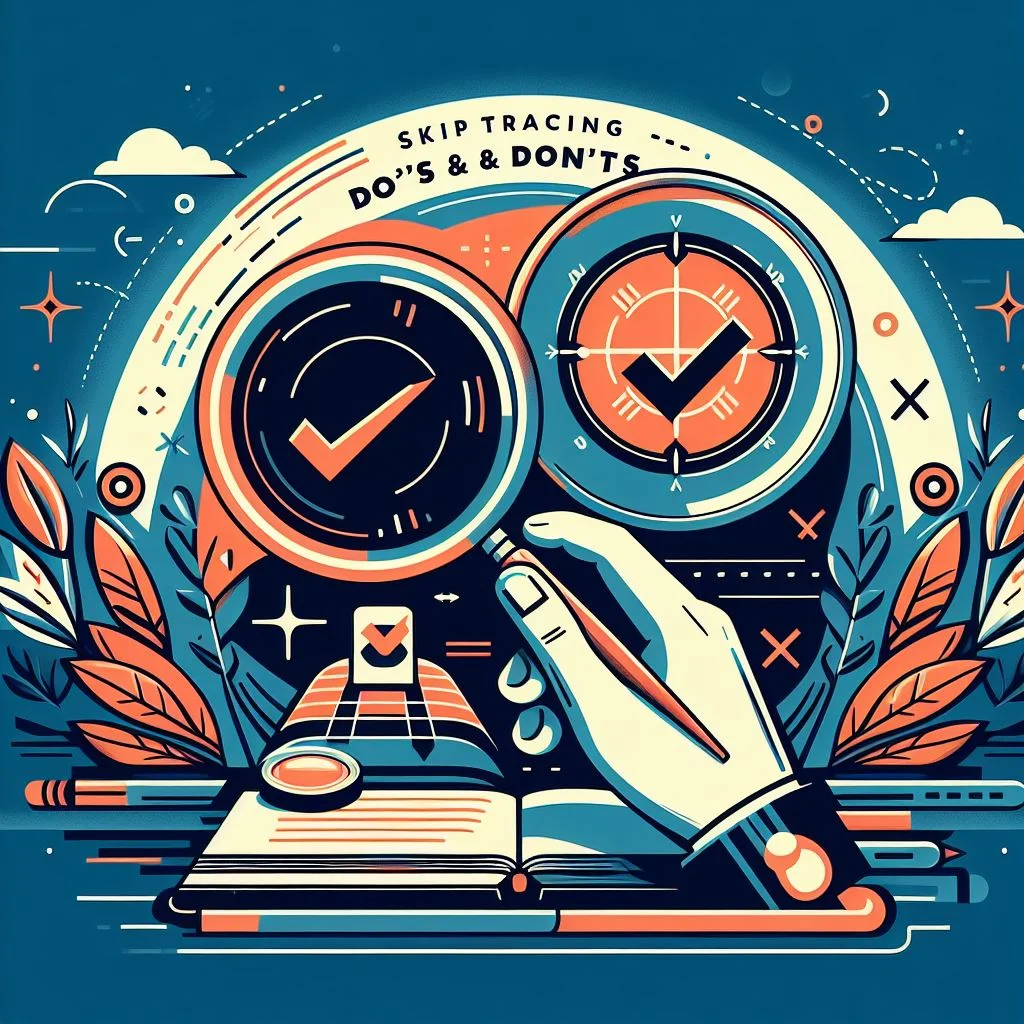Blog Details
Skip Tracing Do’s & Don’ts

Skip tracing, a powerful tool for locating individuals, demands a strategic approach. Explore the nuances of effective skip tracing in our guide, covering the do’s and don’ts to ensure optimal results. Whether you’re a novice or seasoned investigator, these insights will refine your skip tracing skills.
What is Skip Tracing?
Before delving into the do’s and don’ts, it’s crucial to understand skip tracing’s essence. This investigative technique involves locating individuals by scouring public records, online databases, and various resources. Now, let’s navigate the key practices to follow and pitfalls to avoid for successful susskiptracing.comkip tracing.
Skip Tracing Do’s
Utilize Comprehensive Tools: Invest in advanced skip tracing tools to access a broad spectrum of data sources, enhancing the accuracy of your searches.
Verify Information: Cross-verify gathered information to ensure accuracy and eliminate the risk of acting on outdated or incorrect details.
Stay Compliant: Adhere to legal and ethical guidelines when conducting skip tracing to protect privacy and maintain professional integrity.
Employ a Systematic Approach: Organize your search process systematically, covering all potential sources and ensuring no crucial information is overlooked.
Skip Tracing Don’ts
- Avoid Unverified Data: Relying on unverified or outdated data can lead to inaccurate results. Always cross-check information from multiple sources.
- Respect Privacy Laws: Refrain from overstepping privacy boundaries. Be mindful of legal restrictions and obtain information ethically.
- Don’t Skip Compliance Checks: Neglecting compliance checks can result in legal repercussions. Stay informed about regulations and ensure your methods align with legal standards.
- Skip Generic Searches: Avoid generic or broad searches that may yield irrelevant information. Tailor your searches to specific criteria for more precise results.
In your skip tracing journey, internalize these do’s and don’ts to refine your skills and achieve more accurate outcomes. For additional insights, visit US Skip Tracing, your partner in effective skip tracing strategies.
Conclusion:
Mastering skip tracing requires a delicate balance between effective strategies and ethical considerations. By following these do’s and avoiding common pitfalls, you can enhance the accuracy of your searches while maintaining compliance with legal and ethical standards. Keep refining your skills and stay updated on the latest tools to become a skip tracing expert.
Frequently Asked Questions
Advanced skip tracing tools provide access to a wide range of data sources, enhancing the accuracy of searches and improving the overall efficiency of the process.
Cross-verify gathered information by checking multiple sources to ensure its accuracy and relevance, reducing the risk of relying on outdated or incorrect data.
Skip tracers can respect privacy laws by obtaining information ethically, avoiding overstepping privacy boundaries, and ensuring that their methods align with legal standards.
Skipping compliance checks can lead to legal repercussions. It is crucial to stay informed about regulations and ensure that skip tracing methods comply with legal standards.
Individuals can refine their skip tracing skills by internalizing the do’s, such as utilizing comprehensive tools and verifying information, while avoiding the pitfalls mentioned in the don’ts.

Sarah M.